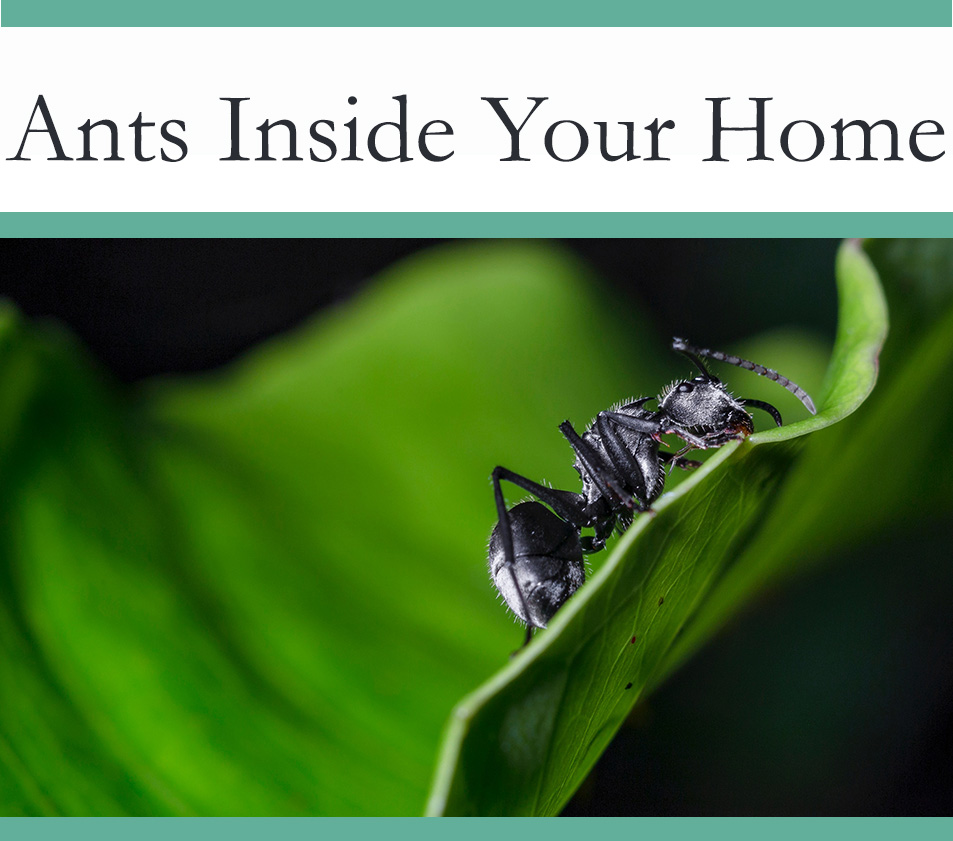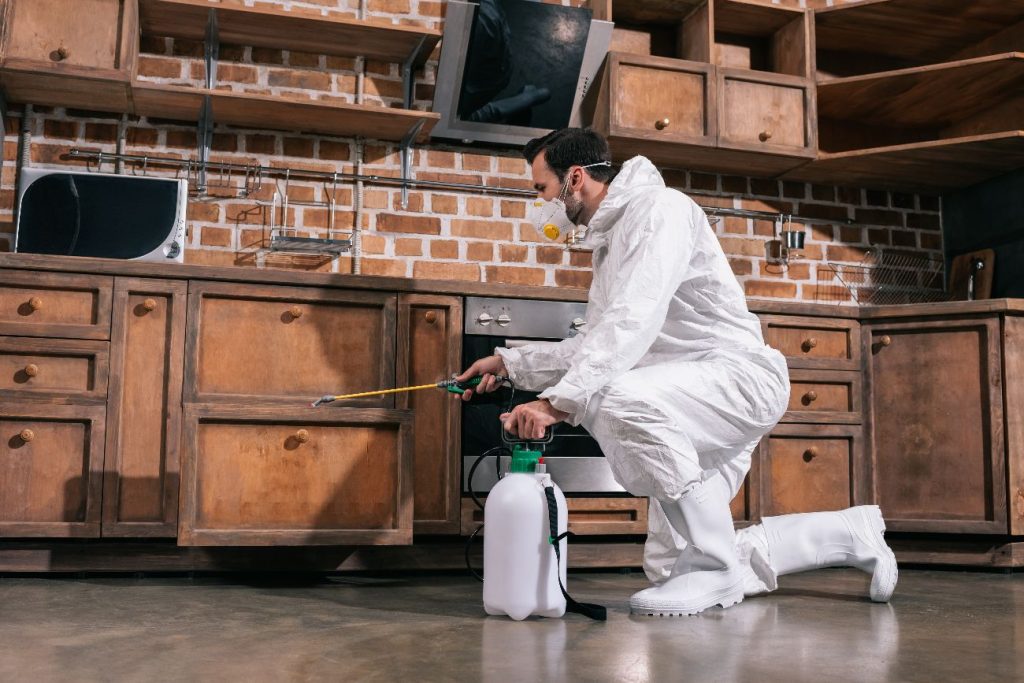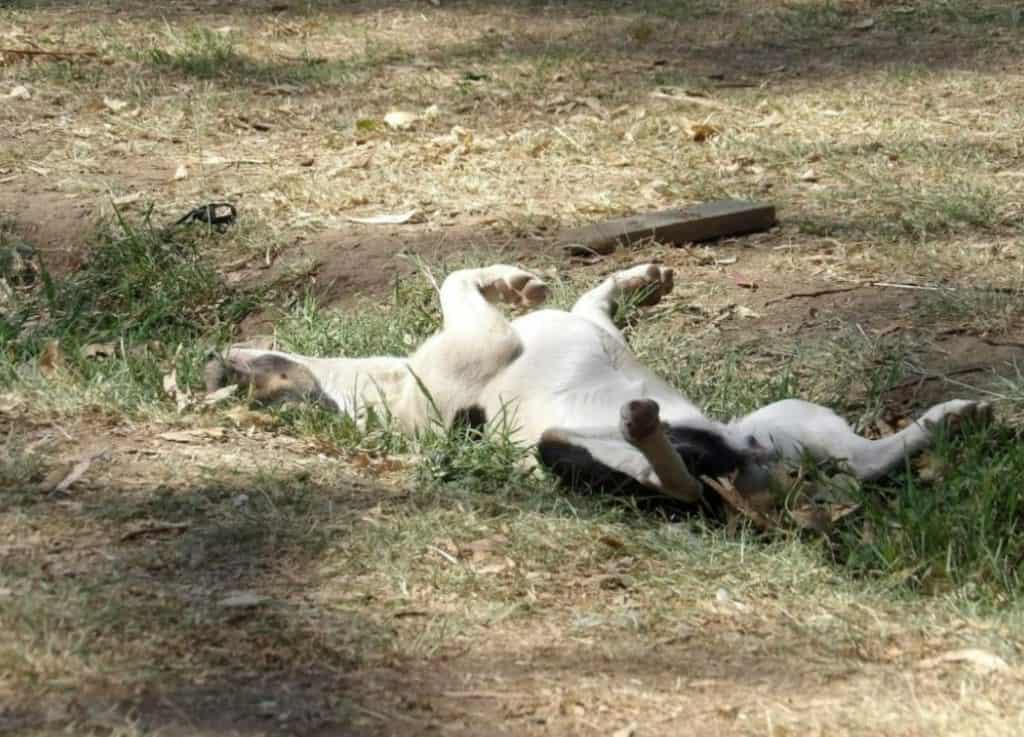
Ants are made to live outdoors, and that’s where you’ll find most species. But some ant species will happily come inside human homes in search of water, food, and shelter.
In the USA and Canada the main offenders inside homes and buildings are Moisture, Pavement, Fire, Pharaoh, Argentine, Odorous House, Crazy, Ghost, and Carpenter ants.
All of these creatures will come inside buildings if given a chance. The best way to prevent an ant infestation is by ant proofing your house & making sure they don’t enter the building in the first place. Keeping them outside will also prevent them from creating new colonies inside your home.
Ants are fascinating creatures. They’ve been around for millions of years, and have become the most successful group of animals on the planet, with the possible exception of our own species. In fact, it’s estimated that for every human on the planet, there are over 1 million ants.
With over 12,000 species discovered, ants are also some of the most specialized creatures on earth. The range of their adaptations to different environments is staggering and leads to some of the most sophisticated behaviors in the animal kingdom. And all this from a creature with a brain around the size of the tip of a ballpoint pen.
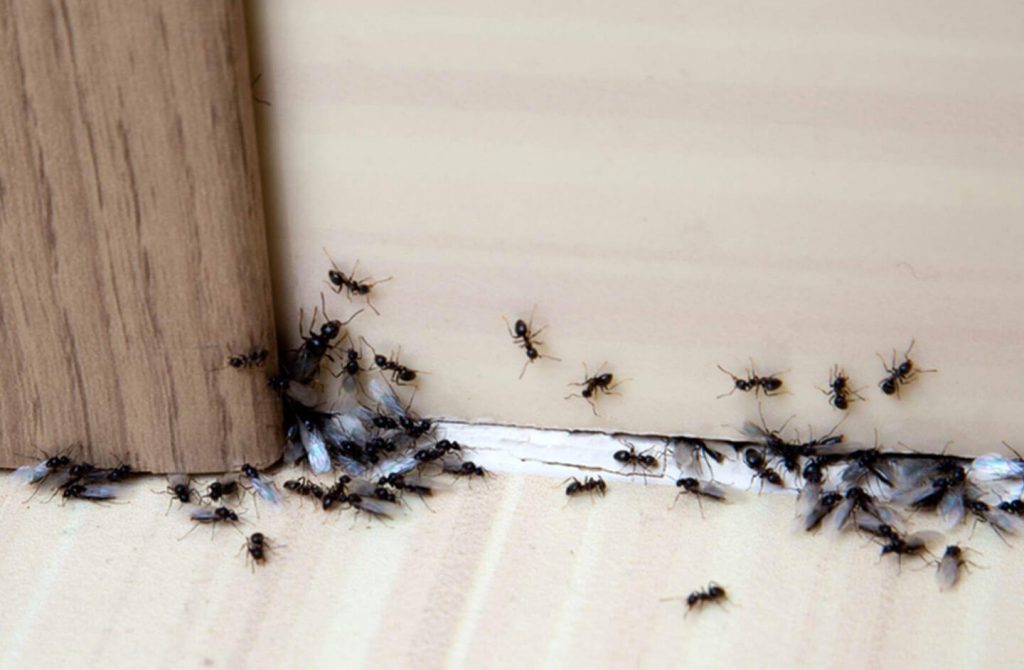
But it’s hard to see the positive qualities of these insects once they come inside your home.
Although ants don’t spread disease, and most species are incapable of harming humans, they can become a real nuisance when they enter your home or office building.
So let’s take a closer look at these invasive creatures.
Moisture Ants
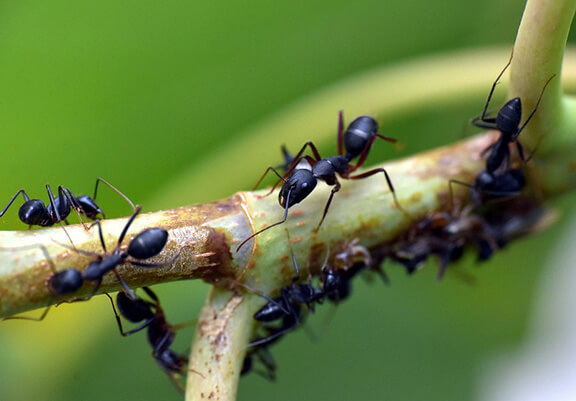
The common name of moisture ant describes a range of different creatures, most in the Lasius genus. These ants are also sometimes known as sugar ants, garden ants, and black ants. However, these ants can vary widely in color, from black all the way to a pale yellow depending on their diet.
It’s hard to see their positive qualities once ants invade your home.
In their natural habitat, these creatures nest in soil under rocks and also in rotten word. As the name implies, they require high levels of humidity to thrive and often come into homes in search of water. If you have rotten wood in your home, these ants can excavate it to make a nest. But they can also nest in the soil underneath the foundations of the building and emerge through cracks in the concrete.
Pavement Ants
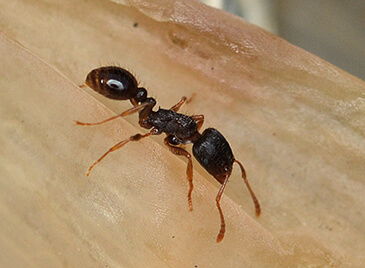
This common species of ant is generally found outside, where they nest in sandy soil underneath concrete and paving slabs. Brown to black in color, they can reach up to 1/8 of an inch in length. They are territorial and will readily fight other colonies of ants to defend their nest.
These ants will feed on almost anything. Their natural diet consists of dead insects, honeydew secreted by aphids, seeds, and plants up. They will also eat meat, nuts, cheese, honey, and bread. They will forage up to 30 feet away from their nest, and this can often bring them inside human homes, where they can find plenty to eat.
This species can enter homes in search of food, but they also capable of building colonies inside your home. They can nest in insulation in walls and underneath flooring. They are often found near heat sources and usually enter buildings at ground level through cracks in the concrete.
Fire Ants
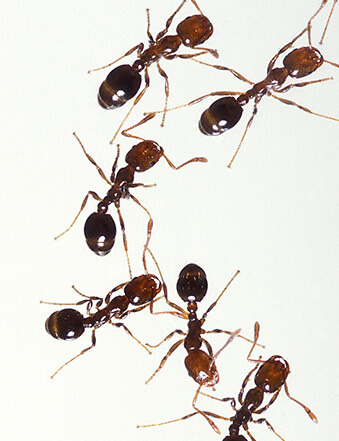
Fire ants have a bad reputation thanks to their ability to deliver a painful sting when they feel threatened. Usually, this species lives outdoors, where they excavate soil and raise large visible mounds over the colonies.
Although usually considered a ground-nesting ant, these critters are capable of creating colonies indoors. They can nest in the wood or masonry of buildings, and are typically found in areas near soil. Exposed soil within a home, such as a bath trap under the tub, can also provide a home for these bugs. Additionally, they will sometimes live in the soil of a potted plant.
Fire ants prefer to feed on food with high protein content, but they are not picky eaters and will consume almost anything. That includes human food. Fire ants are also attracted to electricity, and can often damage electronics by coming between two contacts and causing a short. The shock the ant receives can cause it to release a defensive pheromone which will attract more ants.
Because these ants are capable of stinging, having them in your home is a serious cause for concern. They have even been linked to the deaths of humans by causing anaphylactic shock through multiple stings. Fortunately, it’s relatively rare for these creatures to build a nest inside the building. If you see fire ants indoors, it’s far more likely that the foragers have wandered in from outside. Either way, it’s important to determine where they are nesting to decide on the best method of treatment.
Pharaoh Ants
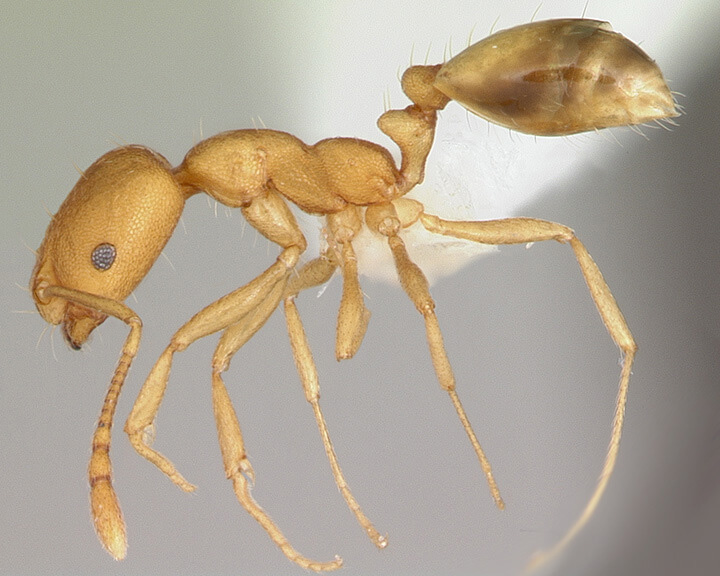
Not native to the United States, this ant can nevertheless be found throughout North America. Its colonies can have hundreds of thousands of members, including hundreds of queens. As a tropical species, this ant can only live outside in warm locations such as South Florida and Hawaii. However, this is an ant that will happily live inside human homes.
Pharaohs nest in warm, humid areas, preferring temperatures above 80°F. They consume a wide range of food, including virtually anything humans will eat.
These ants are most easily identified by their tiny size, with workers around 1/16 of an inch in length. They are usually yellow or orange in color.
Pharaoh ants are one of the hardest ant species to control inside a building.
Because of their multiple queens, Pharaoh ants should never be sprayed with anything, including household cleaners. This will cause the colony to split up, and the numerous queens will separate to start multiple nests throughout the structure. The only effective way to treat pharaoh ants is by use of a slow-acting poison bait. This method of treatment will not stress the ants and so will not encourage them to split the colony. However, pharaohs can change their dietary preferences seemingly overnight, making them one of the hardest ant species to control inside a building.
Argentine Ants
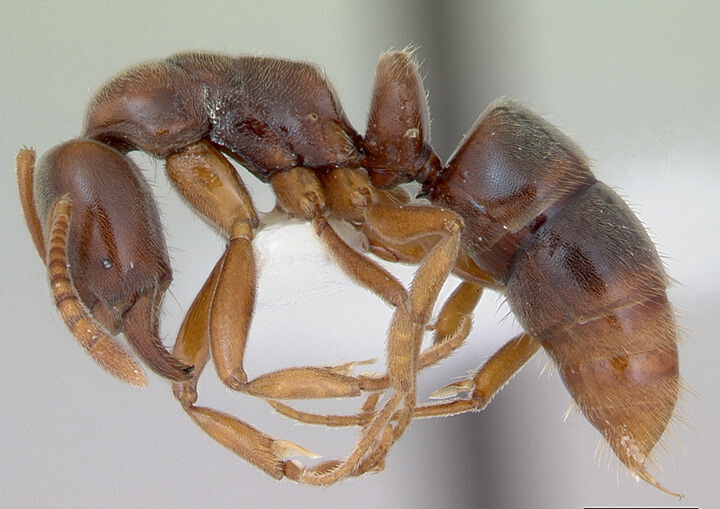
Native to South America, this species is thought to have arrived in New Orleans in the late 19th century. Since then, it has spread across the southern states. Populations can also be found in California, Arizona, Missouri, Illinois, Maryland, Indiana, Oregon, and Washington. These tiny creatures are around 1/16 of an inch in length, with bodies that range from light to dark brown.
Like many other bugs, these creatures love moisture. They like to build nests in soil with high humidity, and areas beneath plants and under rocks are very appealing to them. Indoors, they often nest near water pipes and sinks to be close to a water source.
Like pharaohs, Argentines have multiple queens. But what sets this creature apart is its intense level of cooperation. Although small, these bugs are very aggressive toward other species of ant, and will often try to wipe them out. However, they are entirely non-aggressive toward other members of the same species. As a result, colonies can merge and create supercolonies with millions of members. A colony in California is over 500 miles in size. Furthermore, this colony is linked to even more massive populations in Europe and Japan, forming a worldwide mega colony unlike anything else found in the insect world. These ants have been so successful because they can hitch a ride in the products that humans transport around the world, allowing them to spread far from their original South American home.
Odorous House Ants
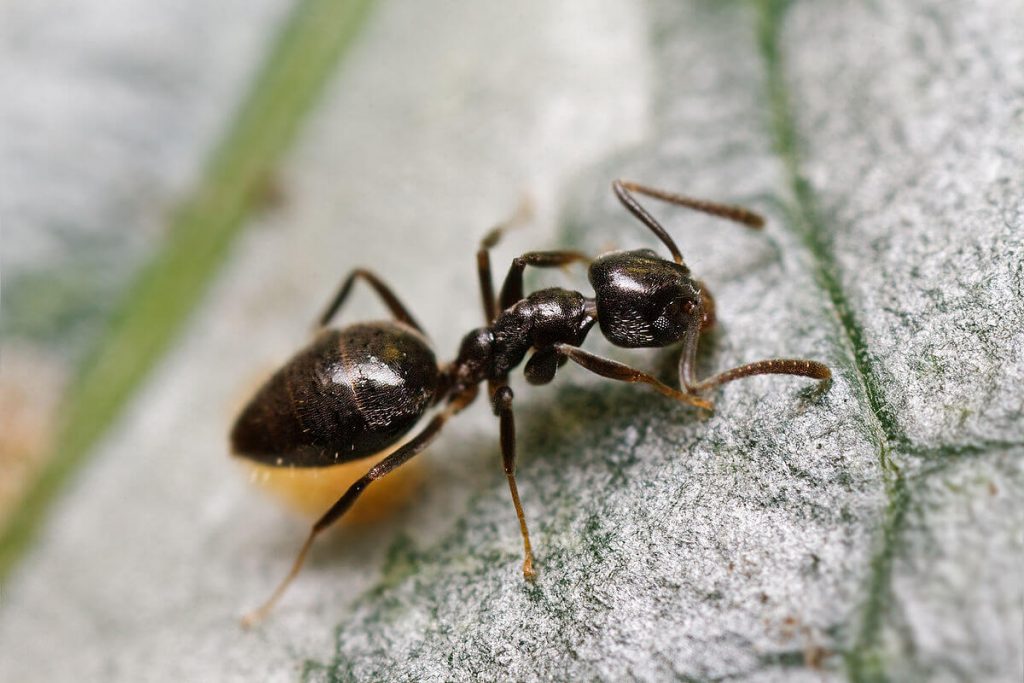
This common critter gets his name from the rotten coconut smell it produces when crushed between the fingers. They are common pests in homes, where they will enter to forage for sweets and proteins. Found throughout the US, the species is native to North America. Adults are up to 1/8 of an inch in length and usually black.
OHAs like to nest near sources of water. Indoors, they can often be found in wall voids close to water pipes and heaters or in crevices under sinks. They also sometimes nest in wood damaged by termites. They can nest outdoors, and have been found living in the nests of large ants such as carpenter ants, or inside beehives. While they will forage on dead insects and other protein sources, they prefer sweets. The honeydew produced by aphids is an important source of food for them, and they often enter homes after rainy weather has washed the honeydew off the local plants. Because of their attraction to sugar, soda, honey, syrup, and other sweet substances are very inviting to them.
When alarmed, the foraging workers will run around erratically with their abdomens raised. However, these ants do not possess a stinger, and so it is unclear why they engage in this behavior.
Crazy Ants
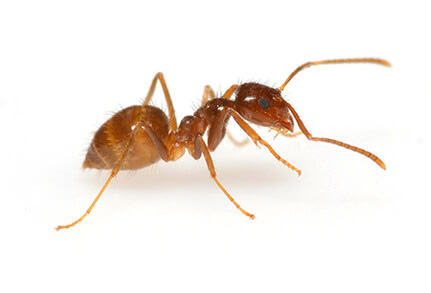
These creatures get their unusual name from the way that they move. They tend to run around erratically and have legs that are unusually long in comparison to their body size. Adults are about 1/8 inch long and usually black. These bugs are found throughout the US, but are generally only an indoor pest in the northern states, whether harsh winters make it impossible for them to survive outside.
Colonies are usually small, with around 2000 workers and multiple queens. These crazy creatures display a high tolerance to environmental conditions, able to nest in areas ranging from very moist to very dry. They will also often abandon one nesting site and move to another. Outside, they create shallow nests in soil, where they feed on other insects, seeds, fruit, and honeydew. Periods of rain that wash the honeydew from plants can often lead to these bugs coming inside in search of other food sources. However, they are also capable of nesting indoors, in potted plants, wall voids, and underneath flooring.
Ghost Ants
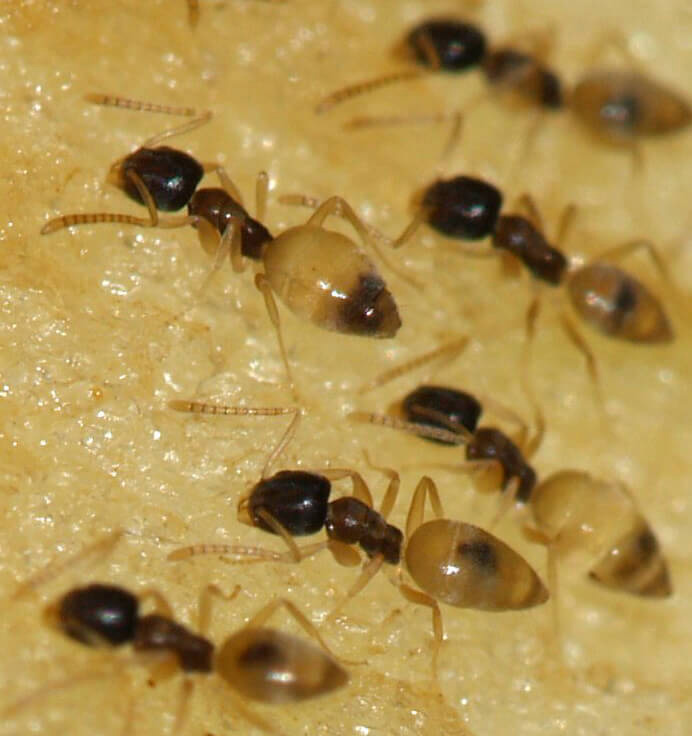
This tropical species is thought to be of African origin. As a heat-loving bug, it’s found mostly in southern Florida and Hawaii, but populations also exist in Texas. They have been found throughout the US and into Canada, but can only survive in heated buildings in northern climates.
These bugs have light-colored legs and abdomens, which can make them difficult to spot and gives them their name. They are also very small, close in size to pharaohs at 1/16 of an inch in length. Like OHAs, they emit a rotten coconut smell when crushed.
Colonies contain multiple queens, and individual colonies are not territorial towards one another. They can nest in soil, inside logs, underneath firewood, and in cavities inside trees and shrubs. They often enter homes by following trails along branches that come into contact with the building. These critters have a sweet tooth, and will often enter buildings in search of sugary substances to feed on. For this reason, good hygiene is very important in keeping these ants at bay.
These creatures are also capable of nesting indoors, in potted plants, behind baseboards, and inside wall voids. Just as they do outdoors, they seek out warm, dark cavities in which to begin a colony.
In northern climates, the species is a significant pest in greenhouses. They are often brought into homes via their habit of nesting in the soil of potted plants.
Carpenter Ants
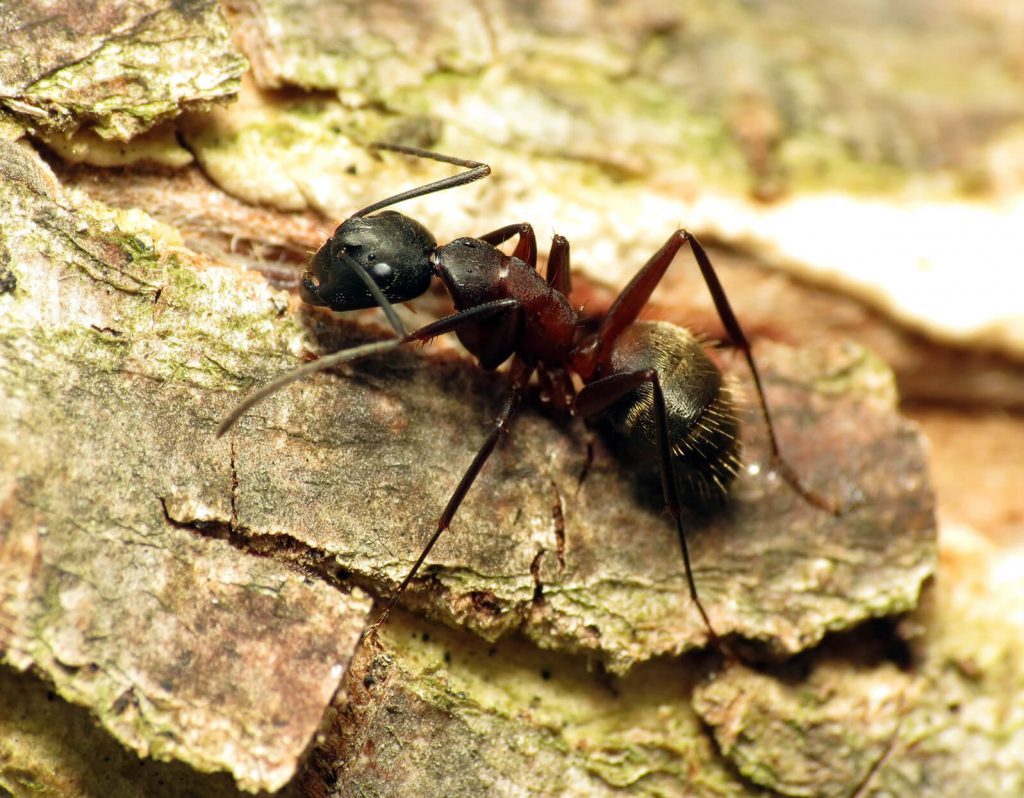
Carpenter ants are one of the most notorious invaders of human homes and buildings. Native to North America, they are the largest species of ant on the continent. Adult workers can reach half an inch in size, and queens can be almost an inch long. While this can make them relatively easy to identify, it’s important to note that workers come in a variety of sizes, and are often smaller in spring than they will be later in the year.
Carpenters get their name from the habit of nesting in wood. Typically, the species has a single queen, and she will start a colony in wood that has been softened by water damage. As a result, this nest is usually – but not always – outside. However, these bugs maintain more than one nest. As the colony grows and matures, the ants will seek out a new site and construct what’s known as a satellite nest. The ants will carry eggs from the primary nest to a satellite nest where they will mature and emerge as adults. The satellite nest requires lower humidity than the primary nest, and as a result can be either indoors or outdoors.
Carpenters have powerful jaws and are capable of boring holes in wood. Unlike termites, they don’t need the wood to be water damaged to excavate it. Also, unlike termites, they don’t eat the wood. They spit it out in the form of fine sawdust that can sometimes be found piled up under the entrance to their nest. Carpenter ants excavate galleries in which to keep their eggs protected by the wood that surrounds them.
Carpenter ants feed on honeydew, fruits, and other insects. They are quite poor foragers relative to other ants, and will venture up to 300 feet from the nest in search of food. So even if the nest is outdoors, they often come inside on a quest for something to eat.
If you’re seeing carpenters inside your home, it’s important to try and figure out where they are coming from. One or two foraging workers coming in from the garden doesn’t need to be a cause for alarm. But more regular appearances of these ants may indicate the presence of a nest. And the nest may well be inside your house. Because of their habit of carving colonies out of solid wood, these bugs are a significant cause of structural damage to buildings. It’s estimated that they cause $5 billion worth of damage each year in the US alone.
Additionally, although bait products are available for carpenters, the ant’s relatively poor foraging ability and picky food habits means that bait is rarely successful in eliminating a colony. To keep these ants out of your home, a perimeter treatment with a residual pesticide is a more effective method of control. However, if they have established a satellite nest inside your home, it’s not enough simply to keep them out. You’ll want to locate and destroy the nest directly.
This is easier said than done. This species is most active at night, and colonies are often built inside walls and other inaccessible places. Because of this, and the potential for serious structural damage to your home, carpenters are often best dealt with by a professional pest control company.
Prevent ants from entering your home
Ants in your home are not only inconvenient, they can cause serious damage to your house. The best way to prevent costly damage is to prevent the ants from entering your home in the first place. Once ants invade your building and start a colony there are several ways to get rid of them.

